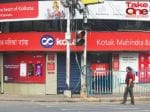Markets stare at $19 bln outflow as new listings will test investor resilience
As markets are already combatting a severe sell-off in equities, expiry of lock-in periods of large companies may intensify the pressure
 There could be a possible turmoil of $18.8 billion outflow of money between October and December, as 43 companies will see the expiry of lock-in periods
Image: Shutterstock
There could be a possible turmoil of $18.8 billion outflow of money between October and December, as 43 companies will see the expiry of lock-in periods
Image: Shutterstock
Amidst a market that’s already caught in a downward spiral, which is wrecking the nerves of investors, another round of funds sell-out will put further pressure on equities and add to the tension. As a clutch of new listings hit secondary markets in the last few months, these stocks may face selling pressure after the lock-in periods of various categories of investors during the initial public offering (IPO) phase are expiring.
There could be a possible turmoil of $18.8 billion outflow of money between October and December, as 43 companies will see the expiry of lock-in periods for existing shareholders in various categories in their IPO period. The analysis by Nuvama Alternative & Quantitative Research considers stocks listed until October 4.

















